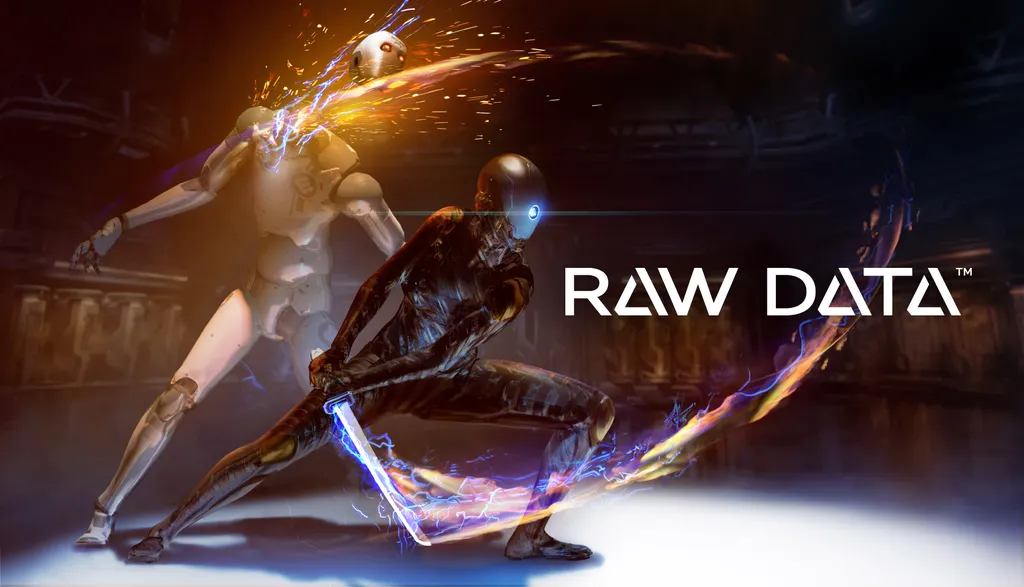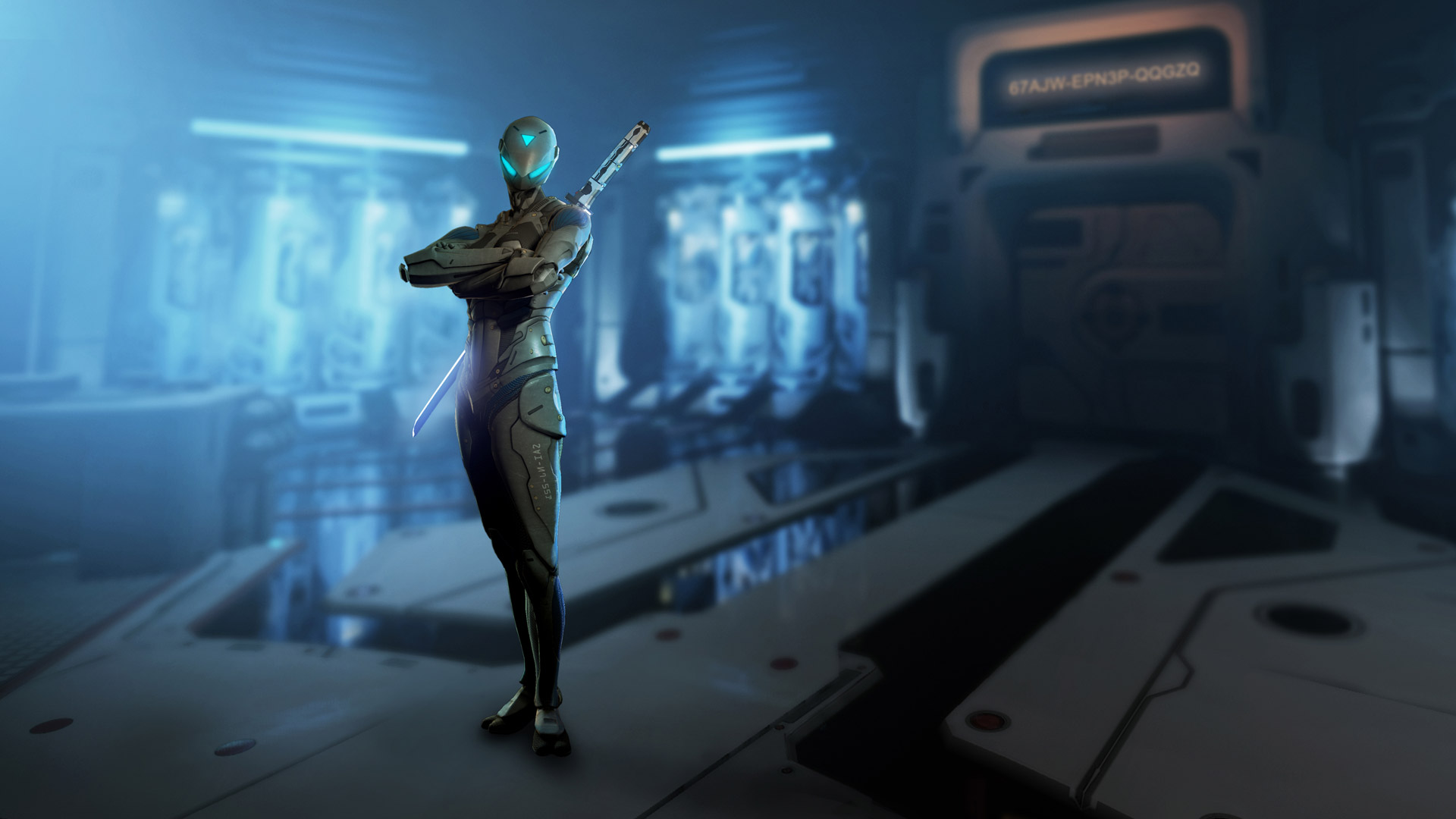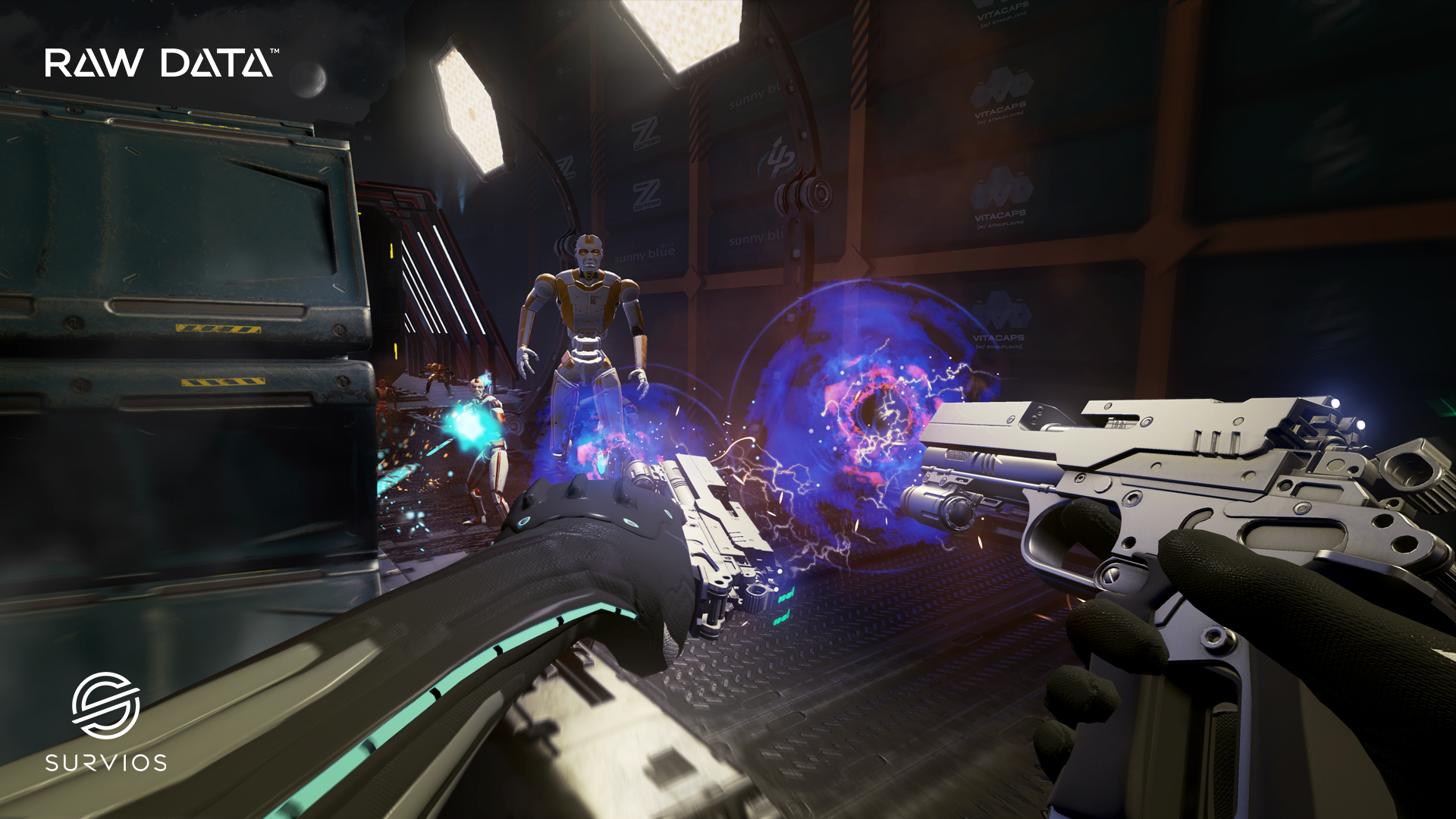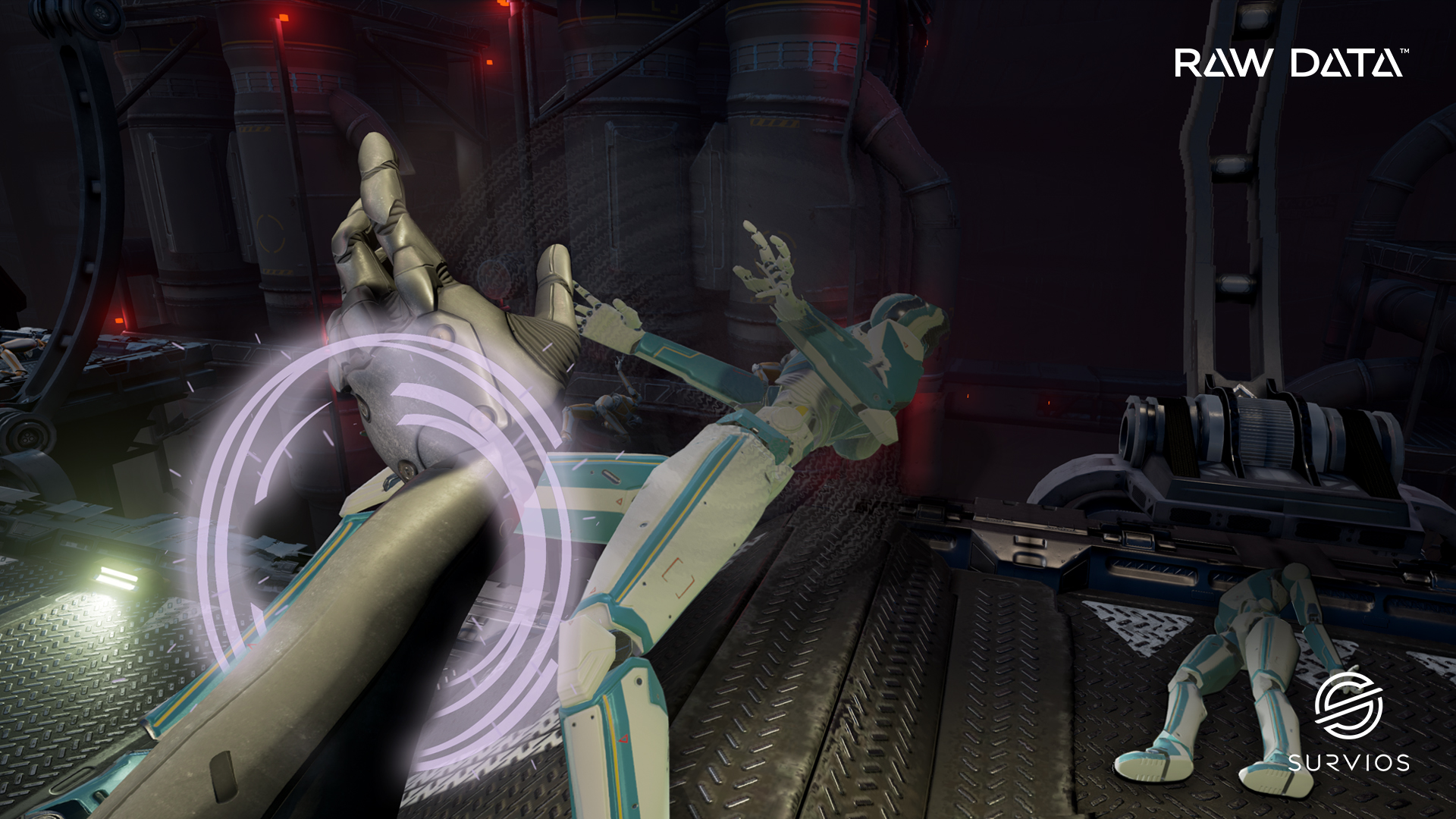I’ve played a lot of VR games. Some task me with shooting zombies, other put me in the cockpit of a spaceship, a few put me behind the wheel of a top-end car, and others have me exploring and uncovering clues. Throughout the dozens of games I’ve played, several have nailed the sense of presence that makes VR so powerful. Many of them have made me feel like a badass, some have even made me feel helpless. But very few have established that ideal combination of adrenaline-rushing fun, social and cooperative gameplay, and enough content to feel like an actually complete game in the making. Luckily, that’s precisely what Raw Data is.
From Survios, Raw Data is easily one of the most anticipated VR games for the HTC Vive. In fact, HTC Vive’s official social channels hyped this game for months across both GDC and E3 and it immediately hit the top of the charts when it released yesterday. We’ve also gotten hands-on time with the game on multiple occasions, coming away impressed each time, whether that be the limited demo we first saw at VRLA, or the near-launch-build of the game we tried at E3. Every time Raw Data has not disappointed.
Laying the Foundation
What makes Raw Data so special is difficult to define, as it truly marries several components together in one elegant package. For starters, the sci-fi setting feels right at home. The world around you feels alive, as the opening moments put you in a gigantic Eden Corporation tower, looming over a densely populated neo-futuristic city. As an operative with the hacker organization Syndik8, you have to embark on secret missions to steal data for the greater good. It’s a simple premise, but sets the tone for what’s planned to be an exciting technothriller that’s equal parts sci-fi action and futuristic espionage.
To my great pleasure, the voiceover work from your offsite contact is wonderful. She gets you acclimated to the controls, moving around the environment, and even using the different weapons while you’re at the game’s central hub location. In the currently released Early Access build, there are two heroes to choose from: Bishop, a pistol-wielding “gun cleric” with a wide range of abilities, and Saija, a “cyber ninja” with an electric katana.
Bishop is the most established ranged hero of the two, since he packs dedicated guns. But in addition to carrying dual pistols, he can charge up shots for added impact, slow down time to pick off enemies with pinpoint accuracy using Timewarp, and unload a barrage of bullets with Bulletstorm. If things get extra dicey, you can even put the guns away and start punching with your bare hands.
Saija on the other hand feels like the more versatile of the two, even though she is a bit more difficult to master. In addition to slashing her robotic adversaries, she can utilize a Shuriken Stream from her hand, giving her a short burst of mid-range damage. But her most exciting ability is the ability to literally throw her swords – like boomerangs – using the Katana Throw to do massive damage from a distance.
Mastering the arc and aim of the blade is tough, but so satisfying when it connects. You can even pull your hand toward you to send the sword flying back more quickly. On top of that, she can Gravity Thrust her enemies to send them careening backwards and performs a massive ground-pound ability known as Levitation Smash. To top it off, she can also use a Reflection Counter on enemies as well.
Empowering Players With Freedom
None of that would be nearly as exciting if the gameplay wasn’t perfectly tuned, so luckily Raw Data features the most frenetic and empowering combat system I’ve seen yet in a VR game. Most roomscale experiences I’ve played either strap your character down in a single, unmoving location (such as The Brookhaven Experiment) or take a slower-paced approach from a design perspective to let you get acclimated to slowly pointing and teleporting around (such as The Gallery.) Both of those approaches are fine in their own right, but it’s refreshing to play a game so fast-paced and intense.
Movement in Raw Data looks strange to watch offscreen, but feels great in practice. Your left hand works much like it does in other VR games, as you can point and click to move greater distances than your room allows. The difference is that not only does your character not teleport, but they don’t need to be facing the direction they’re moving either.
Instead of teleporting, you “sprint” to the location you pointed as the screen quickly blurs to prevent motion sickness, as you can see in the video above. It’s a simple system that works incredibly well. And to make movement even easier, the various levels have static beacons at key points that you can sprint to from a large distance, making it easy to quickly move around the map. When you combine this with the fact that you don’t even have to look where you’re pointing, such as moving backwards or strafing while fighting, it quickly evolves every encounter from a “standing in one spot while I fight” situation into a frantic bout of intense action.
The decision to launch Early Access with these two heroes feels deliberate, as they complement one another so perfectly. Saija can rush in and deal heavy damage up close to approaching enemies, while Bishop lays down suppressing fire from a distance. Saija can fall back with her Shuriken Stream and Katana Throws if things get too intense while Bishop cleans up remaining forces using his Bulletstorm and Timewarps. The litany of abilities already at your disposal is a bit overwhelming at first, but very rewarding once you get the hang of them all.
In addition to the Hard Point laboratory mission that was already present in a sample version during Raw Data’s alpha and the new central Eden Showroom hub, there are three other missions in Early Access: Dark Source, Skybound, and Vapor Exploit. There are also nine different enemy types offering everything from slow-moving androids, to robots that leap at you, and even heavy-powered mechs that can wreck you in a few shots if you’re not careful.
Each of them offer relatively nuanced gameplay – such as defending access points, mowing down waves of enemies, setting defensive turrets, and other such staples of wave-based action games. But what Raw Data does so well and differently, is that it provides a palpable sense of freedom to the players with two dynamic and powerful heroes.
Planning for the Future
For an Early Access VR title, Raw Data packs a ton of content. But admittedly, the most exciting parts of the game are still yet to come as it’s only in version 0.1 right now. In the detailed roadmap to full release, Survios outline many of the core features that are still not implemented in the game.
For starters, two more heroes are coming: a shotgun-based operative named the Street Merc planned for release in v0.5, as well as a hero that uses a bow and arrow approach named the Rogue Hunter in v0.7. Spread out across the next several months we can expect to see several new missions, new enemies, new abilities, and much more added as time goes on.
The team at Survios is also well-aware of several issues plaguing the early release of the game. For starters, there are lots of issues for AMD GPUs, which is a big problem for a huge portion of the audience. Game crashes aren’t uncommon and, from my perspective, the resolution seemed low as well as I noticed a lot of jagged lines, especially in the Eden Showroom. Ultimately, since this is Early Access, you should expect to run into bugs. You’re paying for this game in its current state to help guide development, not to play a finished product.
That being said, Raw Data feels about as polished as anything I’ve seen in VR yet. In a market that’s overrun with half-baked tech demos and simple, gimmicky cash-in shovelware games that do little to push the medium forward or offer anything other than a copycat experience, a unique, deep, and robust game like Raw Data is a breath of fresh air. And to think that this is only the beginning leaves me extremely excited to see where it goes next.
Raw Data is now available on Steam Early Access for $39.99, but is on sale for 20% off until July 21st.





























